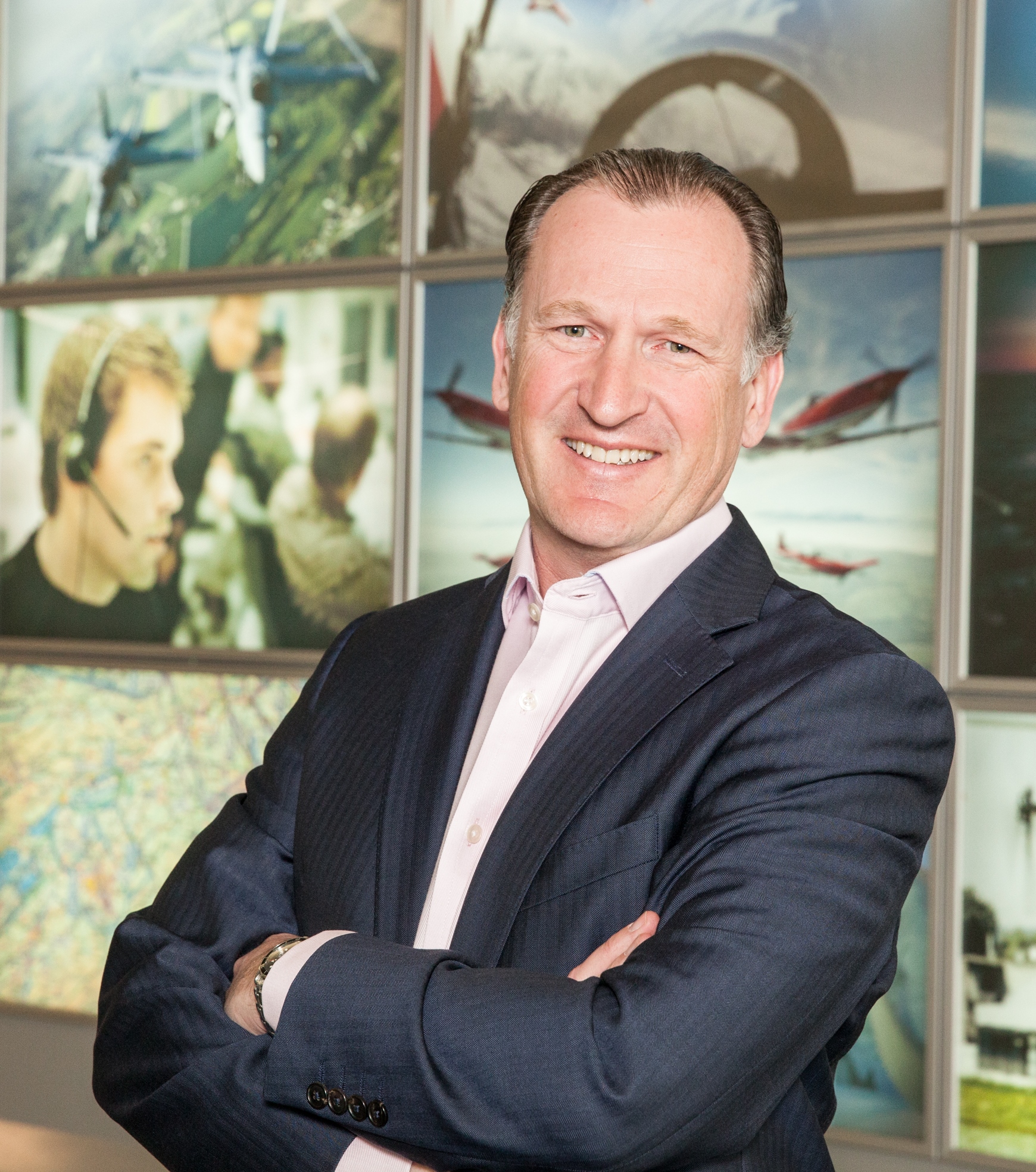12 September 2018
Interview with...Alex Bristol CEO Skyguide
CEO Skyguide
[Cleared n°7 - anno XV - jul_aug 2018]
CEO Skyguide
[Cleared n°7 - anno XV - jul_aug 2018]

Skyguide is at the centre of Europe, what operational and technical challenges are you facing?
First and foremost, we must continue to deliver a high-performing and safe service to our customers, or course.
Costs in Switzerland and the fact that the country is not in the European Union (with no access to EU funding) have meant that skyguide’s prices are very high in comparison to other ANSPs and this means that our customers understandably put pressure on us to reduce these prices.
In the last years we have seen more traffic than forecast, and we are delivering high capacity with only a few more air traffic controllers than before (thanks to technological implementations such as our stripless system). We are running out of capacity reserves now, and need to find new ways to safely deliver more capacity without driving up the costs.
We are witnessing an explosion of activity in the drone industry, and we need to be able to respond, even though it is not yet 100% clear exactly in which direction this will go.
SESAR, FABs, Performance, how is skyguide addressing the changes introduced with the Single European Sky and what is the role of technology in this change?
We are, of course, not part of the European Union, but we are still bound by its legislation and rules. Skyguide is also in between 3 different Functional Airspace Blocks (FABs), which presents various challenges. These FABs have had very limited success and I see the need to re-think the philosophy, and to focus on making sure that the whole European network is run seamlessly, rather than creating a new set of inefficient interfaces.
The Single European Sky forms the backbone of skyguide’s strategy over the next 20 years, and we are fully aligned behind SESAR and the technology and principles coming into force across the network as a result (this is why we have also joined the A6 consortium, in which ENAV is a major player). I am very glad to see the airspace initiative which has just begun its work as part of SESAR, as it will be absolutely imperative to change our airspace designs to make best use of the new technology coming along (once again, ignoring national borders).
Like ENAV, skyguide needs to deliver our National Performance plan for the last months of the second reference period (2018 and 2019), and then again for the next reference period (2020 – 2024), even though we do not yet know what these targets are going to be.
Technology is skyguide’s path into a successful future: we cost too much with current technology, we have to design and implement new technology to make ourselves more efficient. Service-orientated architecture will allow us to make use of services available from others, and will mean that we do not have to make everything ourselves (avoiding duplication of effort and re-inventing the wheel). I am convinced that successful implementation of virtualisation and the application of modern technology are the keys to a sustainable future for us.
The role of ANSPs is changing, how can cooperation among ANSPs help in achieving your objectives?
Skyguide is too small an ANSP to make and do everything ourselves, so our successful future lies in creating partnerships with other ANSPs. The whole European network can only work when individual ANSPs understand themselves to be part of the entire network, and so we must cooperate much more to improve the delivery of the network, and to deliver operational and technological change which one ANSP on its own could not achieve.
We should focus on those things we believe form our core competence, and find partners to help us deliver other elements of the service.
What are Skyguide key priorities for the future, at national and international level?
Implementing the technological innovation which is needed to give skyguide a role in the future provision of Air Traffic Management in the heart of Europe.
In order to do this, we have to have our people on board, understating what the strategy is, why and ensure that we are all pulling in the same direction. And this means rethinking the way we approach social partnership.
And finally, we need to forge alliances with like-minded partners, be they other ANSPs or industry players in order to deliver a better and more efficient future service to our customers.


